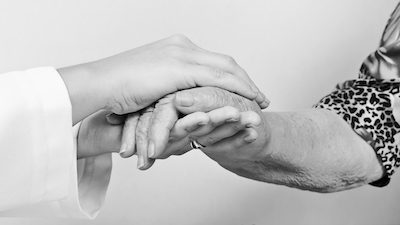 How do you feel about being touched? It probably depends on who is touching you, and why. Are you comfortable touching someone who is not family or a close friend? Some people are open to various forms of touch, such as hugs, while others are more reserved in touching or being touched. How do you know the difference? It’s obvious when someone does not want to be touched, almost more than when a person is receptive to touch. The message can come across without that person saying a word.
How do you feel about being touched? It probably depends on who is touching you, and why. Are you comfortable touching someone who is not family or a close friend? Some people are open to various forms of touch, such as hugs, while others are more reserved in touching or being touched. How do you know the difference? It’s obvious when someone does not want to be touched, almost more than when a person is receptive to touch. The message can come across without that person saying a word.
When a person with dementia is unable to verbalize an unmet, urgent need, their form of communication might be expressed through behaviors such as hitting or crying. How do you communicate with someone who is unable to tell you what they need? The Family Caregiver Alliance (FCA) offers ten tips for communicating with a person with dementia. As FCA notes, it’s important to listen with your ears, eyes, and heart, and to respond with affection and reassurance. Touch plays an important role in communicating affection and reassurance, whether through a hug or holding hands.
Touch can also help a person interpret their world and make sense of their surroundings. It is a pathway to connecting with a person with dementia who might be in distress. If a person with dementia suddenly moves into a long-term care facility, trauma can be expected, as Julie Boggess’ wonderful blog earlier this month noted. Touch creates a connection between people in ways that cannot be expressed in words and goes deeper than verbal communication. While touch is a powerful means of communicating, caregivers in a long-term care facility may be reluctant to communicate through touch.
Caregivers may fear their touch being misinterpreted or unwanted. Their feelings may also be related to the fear of getting too close to their care receivers. While these fears can be understood, the use of touch is powerful and meaningful for both care partners. A person who does not want to be touched will communicate that message non-verbally through moving away, stiffening their neck, or closing their posture (e.g., crossing their arms). When appropriate, touch is a form of communication that can transcend words to convey emotion, caring, and compassion to a person who may or may not be able to respond verbally. Through the power of touch, care partners are engaged emotionally, socially, and soulfully. It enables care partners to be fully present and connected in the moment and is much needed in providing person-centered care.
Kathy Dreyer, Ph.D., is the Director of Strategic Projects at AGE-u-cate® Training Institute, which develops and delivers innovative research-based aging and dementia training programs such as Dementia Live® and Compassionate Touch®, for professional and family caregivers; kathy.dreyer@ageucate.com
 The mention of Valentine’s Day evokes thoughts of love, candy, romantic love and friendship. Expressions of love and kindness are exchanged through gifts and cards. For some people, Valentine’s Day is a special, sentimental occasion. For persons who are caring for a loved one with dementia, Valentine’s Day might feel like another reminder of the challenges in loving a person with dementia.
The mention of Valentine’s Day evokes thoughts of love, candy, romantic love and friendship. Expressions of love and kindness are exchanged through gifts and cards. For some people, Valentine’s Day is a special, sentimental occasion. For persons who are caring for a loved one with dementia, Valentine’s Day might feel like another reminder of the challenges in loving a person with dementia. Rosalyn Carter once noted that there are only four kinds of people in the world: those who have been caregivers, those who are currently caregivers, those who will be caregivers, and those who will need caregivers. Her quote is an accurate assessment of how being a caregiver is a part of our lives, in one way or another. There is a tipping point for becoming a caregiver, and each person can have a different experience with caregiving. Caregiving can be long-term or short-term, depending on the care recipient.
Rosalyn Carter once noted that there are only four kinds of people in the world: those who have been caregivers, those who are currently caregivers, those who will be caregivers, and those who will need caregivers. Her quote is an accurate assessment of how being a caregiver is a part of our lives, in one way or another. There is a tipping point for becoming a caregiver, and each person can have a different experience with caregiving. Caregiving can be long-term or short-term, depending on the care recipient.